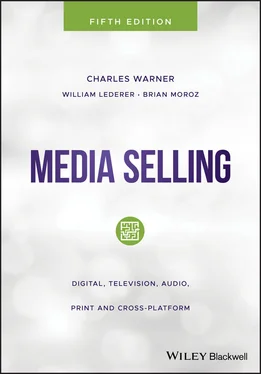But in the early 2000s the Enron and Worldcom scandals put a spotlight on corporate greed and deception as a new generation of employees entered the workforce. This new generation wanted more from their employers than just a paycheck. Many of them wanted meaning in their work at the same time as the Internet was changing the world. Internet companies, in order to attract talented young people, began to adapt purpose or mission statements that gave meaning to the work the young people did.
Google adopted a motto of “don’t be evil” and articulated a purpose or mission to express the reason for its existence: “To organize the world’s information and make it universally accessible and useful.” Google has since dropped the slogan “don’t be evil,” but still is driven by its meaningful and inspiring mission, which is one of the many reasons in 2017 Google topped the list of Fortune magazine’s list of the best companies to work for in America for the eighth time in 11 years.
Facebook is also considered by many young people to be one of most desirable companies to work for in America. In LinkedIn’s 2018 list of top companies at which people wanted to work, Facebook ranked number three, behind Amazon and Alphabet (Google’s parent company). One of the reasons for Facebook’s popularity is its mission statement: “Making the world more open and connected.” However, in 2018, Facebook CEO Mark Zuckerberg announced a change in the mission statement. It is now: “Bring the world closer together,” which is still inspiring and positive and more in tune with Facebook’s effort to reduce fake news and divisive posts, some of which were attributed to Russia during the 2016 US presidential election.
Google and Facebook’s mission statements have been widely covered in the general and trade press. Why? Because the concept of a business doing well by doing good, in other words, having a commitment, or cause, of serving their communities and doing something good for humanity has been shown to be good business because it attracts and keeps good, purpose‐driven employees. Having a meaningful cause also appeals to consumers and suppliers.
For example, Facebook surveys its workforce twice a year, asking employees what they value most. After examining hundreds of thousands of answers over several years, the company identified three primary motivators: career, community, and cause. In a Harvard Business Review online article written by Facebook HR executives and Adam Grant, cause was defined as follows: “Cause is about purpose: feeling that you make a meaningful impact, identifying with the organization’s mission, and believing that it does some good in the world. It’s a source of pride.” 23 These findings from Facebook reinforce the notion that having a meaningful purpose, or cause, is a significant motivator for employees.
Even many traditional manufacturing companies have adopted socially conscious mission, or purpose, statements. For example, the mission statement of P&G, one of the world’s largest advertisers, is: “We will provide branded products and services of superior quality and value that improve the lives of the world's consumers.”
One of the reasons for the corporate emphasis on meaningful mission, or purpose, statements is the realization that, in general, most people want a sense of meaning in their work, as Facebook discovered. In Daniel Pink’s 2011 book, Drive: The Surprising Truth About What Motivates Us , the author writes that there are three things that motivate humans: autonomy, mastery , and purpose . People want autonomy because they do not like to be told what to do all the time. They seek mastery because there is an inherent drive to be good at something. They seek purpose to give meaning to their work.
Therefore, a sales organization must be in synch with its corporate mission, its corporate purpose. So, if you work for Google in sales, the purpose, or mission, of the company is, “To organize the world’s information and make it universally accessible and useful,” but Google’s sales organization has its own mission to support its corporate mission.
The mission of a media sales organization is simple and direct, it is to get customers and keep them .
The mission of an old‐fashioned media sales department was to maximize revenue, which is an internally focused mission that met a media company’s economic need but did not give nourishing meaning to the work that salespeople do. Pink’s three motivational drives do not include making money, making budget, or maximizing revenue because increasing revenue or making a revenue budget tends to make the owners of the media richer than it makes salespeople. Thus, working harder to make someone else richer does not seem to be terribly meaningful to the vast majority of media salespeople. In order to be motivational, a mission or purpose has to be meaningful. It has to give meaning to the work people do – to make them feel good about what they are doing – and for media salespeople, turning customers into partners and helping them get results and be successful makes them feel good about what they are doing.
The four objectives of a media sales organization in order to fulfill its mission to get customers and keep them are:
1 To get results for customers
2 To develop new business
3 To retain and increase current business
4 To delight customers
To get results for customers
Results must be defined by customers – increased sales, reduced distribution costs, increased profit margins, increased share of market, high ROI, increased product awareness, or improved corporate image, for example. Salespeople must help customers get results for two reasons: (1) if customers do not get results, they will not renew their advertising schedules, and, thus, salespeople must take a long‐term view and create renewable business, and they must get results for customers as the customers define results; and (2) helping people makes a salesperson’s job more meaningful, and, therefore, makes both the customer and the salesperson happier.
Also, communicating the primary objective of getting results not only helps turn customers into partners, but also communicates that you care more about them than about yourself, your commissions, or maximizing revenue for your company. But getting results for customers and partners also leads to you and your company making more money because virtually all advertising budgets are based on a percentage of total sales. For example, in 2017 beverage industry companies averaged investing 4.1 percent of their total sales in advertising, and department stores invested 4.0 percent of their total sales in advertising. 24 These percentages of sales invested in advertising by industry tend to remain relatively stable over time, which means that if a customer or partner gets results and sales go up, say 10 percent, its advertising budget is almost certain to go up 10 percent. Therefore, the customer’s investment in your medium will probably go up 10 percent or more.
That is, to turn prospects into customers and then partners. A sales organization must continually develop new business from agencies and clients not only to replace accounts that are lost each year due to normal account attrition but also to ensure growth. Another important reason for constantly developing new business is to create demand, because it is demand that largely determines the price of media advertising.
To retain and increase current business
Managing customers obsessively in order to delight them and getting them to renewal is vital. Just as important is to continually pre‐sell and provide clients and agencies with solid evidence, reasons, and, especially, ideas, for them to increase their investment in your medium. Your best prospects are your current partners, and continually showing them the benefits of your medium and getting an increased investment from them is crucial for growth.
Читать дальше












